

2010/2011 Design This Spaceship ContestThe final scores have been tabulated and the first three entries listed below are the winners of the design contest. The first three entries are in order by score with the highest-scoring entry listed first. The rest of the entries are shown in random order. Congrats to the winners and thanks to all who entered. 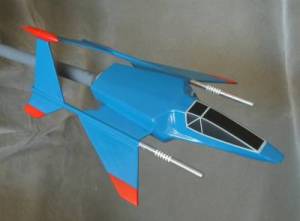 Jim Bassham's The Blue CameroThis is my entry for the 2010 design this spaceship competition. It is a plane-like rocket with a 24mm motor mount and utilizes rear-ejection for parachute deployment. In looking over last year’s “Design this Spaceship” pictures I was really at a loss for what could possibly fly. I chose the blue plane-like design ( #4), because it seemed to be a shape that might fly with enough nose weight. But I had my doubts. View the build thread for Jim Bassham's The Blue Camero. 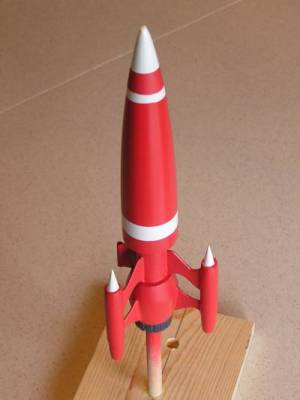 Ray King's Little Red SpeedoThis is my submission for the EMRR Spaceship Design Competition as well as the EMRR Challenge #4. The rocket is designed to use an 18mm engine and 18” parachute recovery. OK – the name – My Little Red Speedo – Hey the rocket is red, it is small, it is fast, what better name to create a little attention. View the build thread for Ray King's Little Red Speedo. 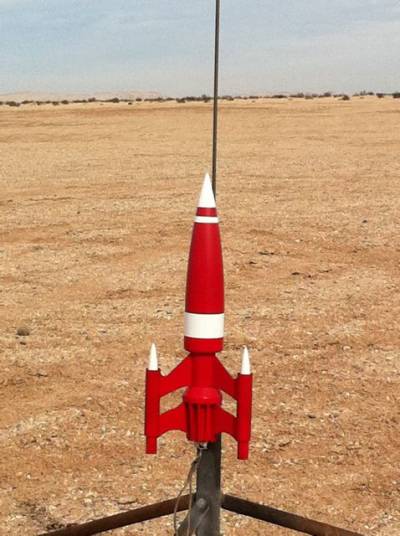 Howard Smart's Kenny's TrimaranThis is a very interesting rocket built from a 3D model as part of the Design This Spaceship contest. The rocket has a large nose cone, narrow waist section, and three outboard pods that look like jet intakes. View the build thread for Howard Smart's Kenny's Trimaran. 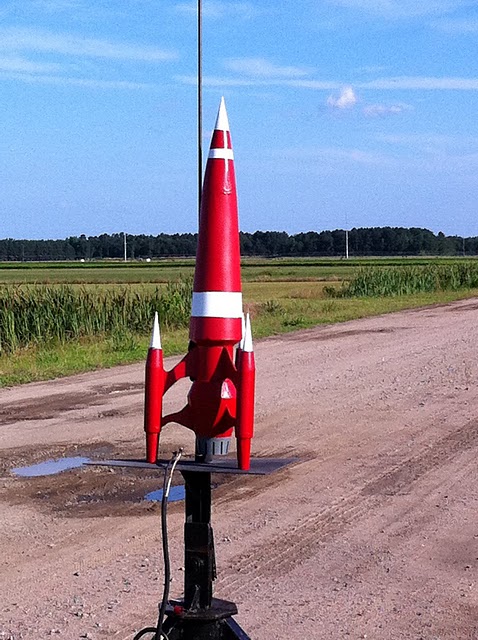 Peter Stanley's Velvet AntThis is my entry for the Design This Spaceship Contest. The dry weight is just over 2 lbs, and it is 27.5" tall. It has a 2.6" center tube which runs from the bottom up to the base of the nose cone. I flew it three times in June 2011 at Orangeburg SC. Each flight was powered with a G motor, twice on a G76 and once on a G64. I lost the nose cone on the last flight, and not sure if I'll replace it. It flew beautifully though. I named it Velvet Ant because I think it resembles one if you look at it backwards. View the build thread for Peter Stanley's Velvet Ant. 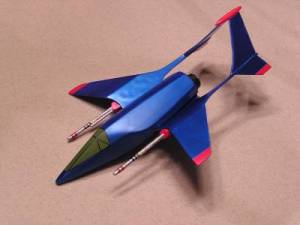 Ray King's The Blue HawkThis is my second submission for the EMRR Spaceship Design Competition. The rocket is designed to use an 24mm engine, rear engine ejection and 18” parachute recovery. The name Blue Hawk was chosen by my family a dinner one night – kids said it looks like a hawk and well the blue is pretty obvious. View the build thread for Ray King's The Blue Hawk. 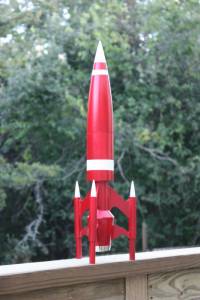 Dale Marshall's Red SpikeWhen looking over the design possibilities for this contest, I was intrigued by all of them, but the only one I felt comfortable building at my current skill level was the red & white one with the huge nosecone. My first attempt at this build (Mini Red Spike) failed miserably when the rocket arced off of the pad and into the ground where it smashed itself to bits before the ejection charge finished the job. View the build thread for Dale Marshall's Red Spike. 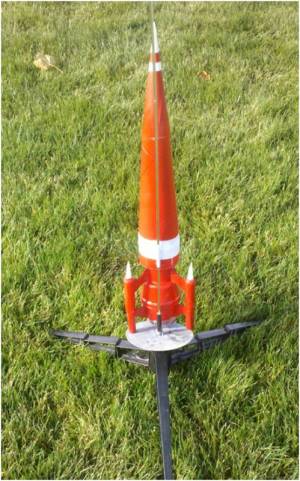 Tucker Lund's The Red CorkscrewThe Red Corkscrew is my entry in the Spaceship Design Contest. View the build thread for Tucker Lund's The Red Corkscrew.
This year, we were inspired by the art work found while searching the Internet for new designs. We hope you really challenge yourself this year and submit multiple entries!
This contest also serves as a bonus item for the 2010 RocketReviews.com Challenge, but it is not necessary to participate in the Challenge to participate in this contest. Below you will find six (6) Spaceship pictures that we found reading the above mentioned books and through other Internet searches. Let's see what you can do. The contest is very straight-forward: 1) Design a flyable rocket that, as closely as possible, replicates one of the designs in the six pictures 2) Write up a Build article, with pictures and templates, to allow others to be able to build one 4) Name YOUR Spaceship
FINE PRINT:
Scoring will be determined using the following:
Winners will be judged by RocketReviews.com Guests during a voting period after the December 1st deadline.
|
|||||||||||||||||||||||||||||||||||||||||||||||||||||||
|
|
|||||||||||||||||||||||||||||||||||||||||||||||||||||||